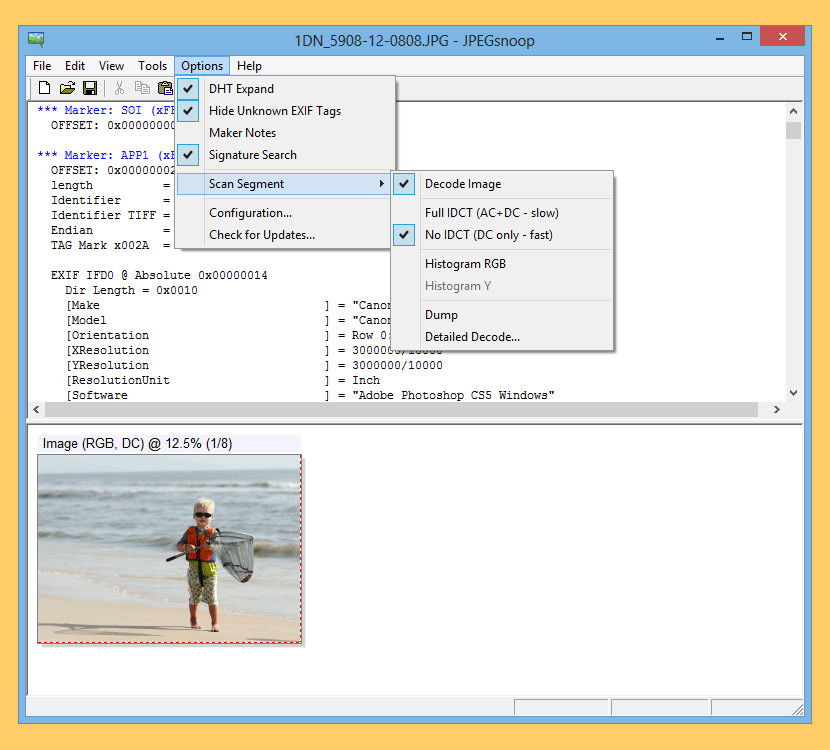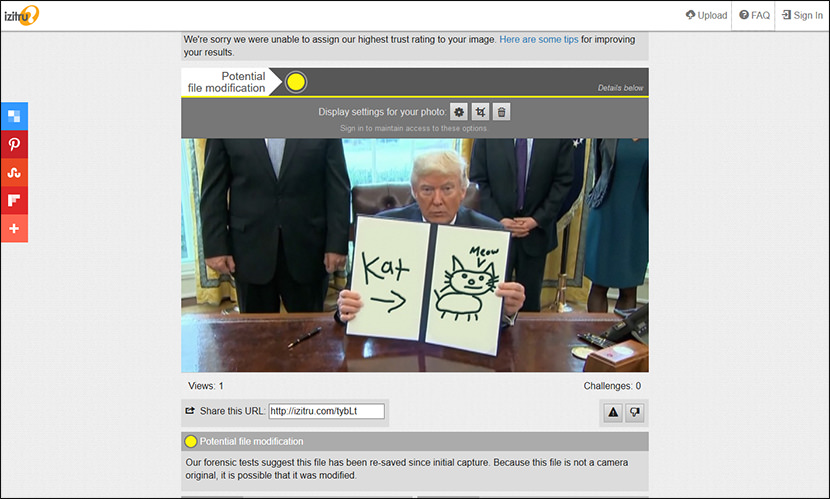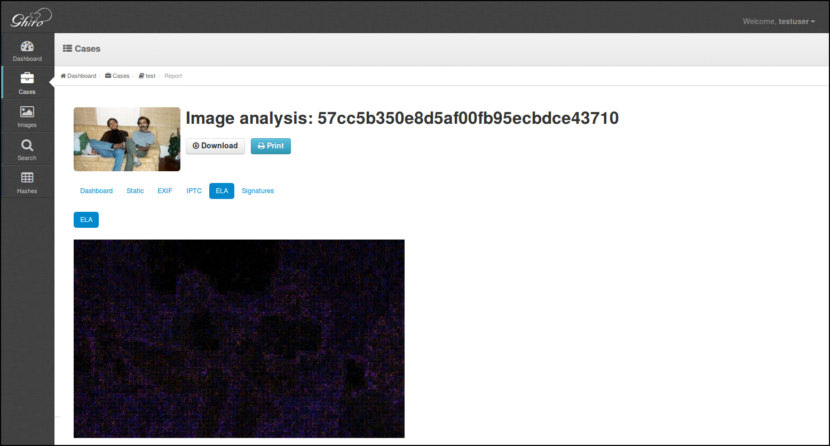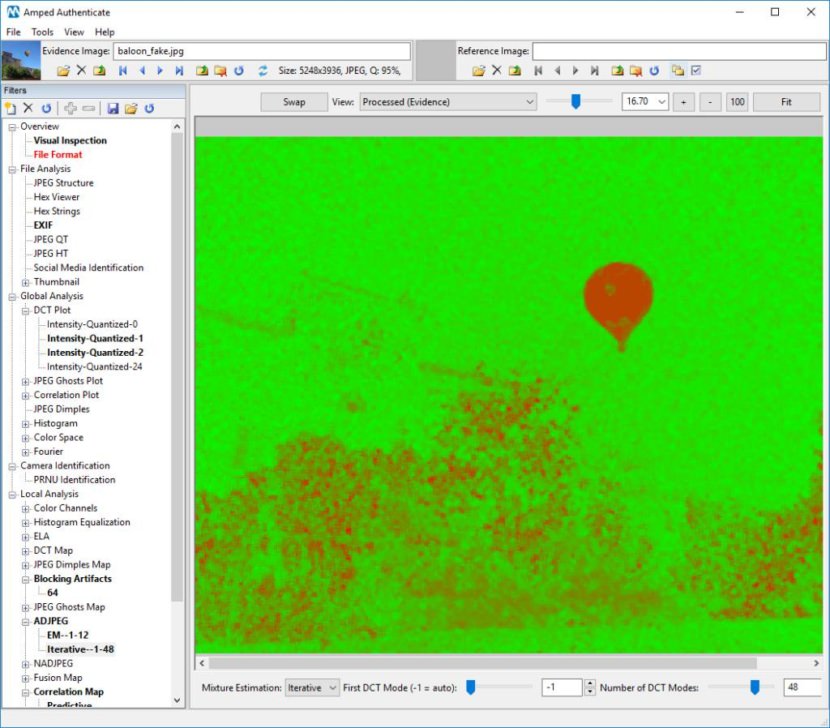With the rising popularity of social media such as Facebook and twitter, fake news with fake pictures that look real has become a big problem. Digital Photos are more integral to communication than ever before, but the wide availability of easy image editing and manipulation tools at the disposal of anyone with a computer, or a smartphone, makes them a risky proposition when trust is important.
Continue ➤ How to Verify Fake Photos, Images or News Report on Facebook and Twitter
Deepfake Videos Are Getting Terrifyingly Real – Artificially intelligent face swap videos, known as deep fakes, are more sophisticated and accessible than ever.
Whether you’re accepting citizen journalism photos for a news site, profile photos for a dating service, insurance claim photos, or even photos of identity documents like licenses and passports, it’s important to know what’s real and what’s manipulated. Before you share the news, always verify the source, if the image appears to be too good to be true, analyze it.
1. FotoForensics
FotoForensics uses an advanced algorithm to decode any possible photoshopped pictures and manipulation; it uses the Error Level Analysis (ELA) to identify areas within an image that are at different compression levels. With JPEG images, the entire picture should be at roughly the same error level. If a section of the image is at a significantly different error level, then it likely indicates a digital modification.
FotoForensics aims to simplify the evaluation process. It works like a microscope — by highlighting artifacts and details that the human eye may not be able to identify. Between having the right tools and training, most people can quickly learn how to evaluate pictures. FotoForensics provides the algorithms, online tutorials for self-paced learning, challenges to test your knowledge, and other resources to help you get started.
- Error Level Analysis
- Metadata Analysis
- Last-Save Quality
- Color Adjustments
- Parasite Detection
2. Forensically
Forensically is a set of free tools for digital image forensics. It includes clone detection, error level analysis, metadata extraction and more. You should think of forensically as a kind of magnifying glass. It helps you to see details that would otherwise be hidden. Just like a magnifying glass it can’t tell true from false or good from evil, but it might help you to uncover the truth.
- Clone Detection – The clone detector highlights copied regions within an image. These can be a good indicator that a picture has been manipulated.
- Error Level Analysis – This tool compares the original image to a recompressed version. This can make manipulated regions stand out in various ways. For example they can be darker or brighter than similar regions which have not been manipulated.
- Noise Analysis – This tool is basically a reverse denoising algorithm. Rather than removing the noise it removes the rest of the image. It is using a super simple separable median filter to isolate the noise. It can be useful for identifying manipulations to the image like airbrushing, deformations, warping and perspective corrected cloning. It works best on high quality images.
- PCA – This tool performs principal component analysis on the image. This provides a different angle to view the image data which makes discovering certain manipulations & details easier. This tool is currently single threaded and quite slow when running on big images.
3. JPEGsnoop

JPEGsnoop is a free Windows application that examines and decodes the inner details of JPEG, MotionJPEG AVI and Photoshop files. It can also be used to analyze the source of an image to test its authenticity. Every digital photo contains a wealth of hidden information — JPEGsnoop was written to expose these details to those who are curious.
Not only can one determine the various settings that were used in the digital camera in taking the photo (EXIF metadata, IPTC), but one can also extract information that indicates the quality and nature of the JPEG image compression used by the camera in saving the file. Each digical cameras specifies a compression quality levels, many of them wildly different, leading to the fact that some cameras produce far better JPEG images than others.
JPEGsnoop reports a huge amount of information, including: quantization table matrix (chrominance and luminance), chroma subsampling, estimates JPEG Quality setting, JPEG resolution settings, Huffman tables, EXIF metadata, Makernotes, RGB histograms, etc. Most of the JPEG JFIF markers are reported. In addition, you can enable a full huffman VLC decode, which will help those who are learning about JPEG compression and those who are writing a JPEG decoder.
- Decode JPEG, AVI (MJPG), PSD images
- MCU analysis with detailed decode
- Extract embedded JPEG images
- Detect edited images through compression signature analysis
- Report all image metadata (EXIF)
- Batch file processing
- No installation required
4. Ghiro
Ghiro is an Open Source software for digital photo and digital image forensics. The forensic analysis is fully automated, report data can be searched or aggregated in different perspectives. Ghiro is designed to assist you and your team in the process of analyzing a massive amount of images, it could become an essential tool in your forensic lab.
- Error Level Analysis (ELA) is a technique aimed to detect if an image is edited or not. It can be applied to compressed images, i.e. JPEG or PNG. The main idea is that an image in his original form has unique levels of compression. The analyzed image is resaved and differences in compression levels are calculated, if differences are detected a probability of edits is high. Ghiro calculates error levels and detects differences between them.
- Hash digest generation – Most common hashes are calculated for the image, to create an unique identifier of it. The calculated hashes are: CRC32, MD5, SHA1, SHA224, SHA256, SHA384, and SHA512
- Hash list matching – Suppose you are searching for an image and you have only the hash. You can provide a list of hashes and all images matching are reported.
- Strings extraction – All text strings contained in the analyzed image are extracted, like in the unix strings tool. The more interesting (i.e. URLs) are highlighted.
- Signature engine – Signature provides evidence about most critical data to highlight focal points and common exposures. Signature engine to highlight common exposure on over 120 signatures
5. Amped Authenticate
Amped Authenticate is a software package for forensic image authentication and tamper detection on digital photos. Authenticate provides a suite of different tools to determine whether an image is an unaltered original, an original generated by a specific device, or the result of a manipulation with a photo editing software and thus may not be accepted as evidence.
Current products and processes are focused on one or a relatively few scientific tools. Authenticate puts the power of multiple tests, procedures, and reporting in one package to improve the user’s ability to detect tampered images or determine originality.
6. izitru

[ Discontinued ] izitru uses automated forensic analysis techniques to certify unmodified digital camera images, so that you can share them in a more trusted manner. Unlike the other 2, it is a very basic photo forensic software that only gives out a ‘true’ or ‘false’ answer.
You only have access to the basic features. When an image is uploaded to izitru, their standard tests only determine whether it is an unmodified original from a digital camera. They do have tests that can identify specific types of editing, such as cloning or compositing, but these tests cannot currently be applied automatically to every image.










Learn more about fotoforensics.com AND fotoforensics
I could use some experts help. Ive been working with a set of photographs sent to me with the metadata erased for the past two months. I have to try and dissprove my theory over the the pictures. Im pretty confindent that im right but im not really seasond in the
D
you can use error level analysis (ELA). its free, easy,
Free online image forensic analysis at Fotoforensics
where to download FBI, CSI and CIA photo enhancing software? open source?
how to know If Photos Have Been Digitally Modified or edited with a photo editing software such as photoshop or gimp or etc? mac os?
guys, there is a simple digital photo forensic photography online tool / version, check them out:
https://fotoforensics.com/
“FBI, CSI and CIA”? Really? I’m the guy who developed ELA and runs the FotoForensics web site. (And that’s my bookshelf in those pictures.) I’m not aware of anyone from the FBI, CSI, or CIA who use my web site. I did train some police officers on how to use the site, but none of them were CSI as far as I know. I think the same can be said for JPEGsnoop by Calvin Hass. (Calvin’s a really nice guy.)
Outside of your alarmist headline, this is a nice article and I grant you permission to use my pictures for this review. (Next time, please ask first.)
Hi Dr.Neal, thanks for the amazing software. I simply love it, and use it often to see if any politician in my home country is faking any photos. I guess to us the common people, this is CIA FBI grade software. The best of the best.
Neil, if two RAW images are merged in Photoshop and then a flat JPG image is created from it, is there a way to tell that it was manufactured from two separate images?
Yes Pete. We know what you are up to, and it is fraud punishable by law.
According to this software, this image located here is fake
http://i.kinja-img.com/gawker-media/image/upload/s—ngIEThi–/1460964860453937474.jpg
I find that very interesting.
the moon is not far, a handful of nation have powerful telescope, this includes China, Russia, Germany, UK, France, Australia and more. If the USA faked the moon landing, don’t you think these countries know the truth? I wont be surprised if they have their telescope pointed at where the USA astronaut will be landing.
Do you know a tool or a app that will help me my husband has been been putting images in in my images on my phone manipulating them and I can’t and I can see him but I can’t get them out and I need to see they’re on a lot of my pictures and I need to see if you know if you know anything I can do
Actually, no, it just indicates that it is not a camera original. ELA shows the background as black but the Earth as a brighter image because recompressing a solid colour can result in no change, which shows as black in the analysis. The colours of Earth are not one solid block, so the compression makes changes, which shows up as brighter. Just because the object stands out does not mean its fake (if you’re not analysing a camera original). As there are many factors that can affect detection of manipulation, forensic analysis often requires comparing the results of multiple types of tests (ELA, Noise Analysis, Clone Detection, Level Sweep etc) and looking for INDICATORS of changes, rather than immediate proof of change.
The reason that it’s comming back as a fake is not a problem with the subject of the image, it’s a problem with the fact that the image is a scan of a printed image (on photo paper or similar). You can tell that it’s not an original because the lanscape does not continue to the edge of the image and where the lansacpe ends, it can clearly been seen that there are two diffent colours of background, the one from the scanner, about the boarder and edge of the image, and the boundry of the image that was scaned. Image analysis only tells you facts about the image file, it can not make predictions about the subject of the image. For example, in outter space photos, there is nothing for the camera sensor to pickup, no photons, so the camera sensor thinks it’s ture black, but really, there no photons being reflected by anything other than the Earth. The fact that only the Earth area shows jpeg articafts doesn’t nessiarily mean that the image is a fake. You can repoduce the conditons where a camera senor will think that their are no photons on aynthing other than photon being refelected by the subject with specal contoled conditons right here on Earth to demonstrate it’s all down to how the camera is hadeling the sensor data.
The moon landing was real. Even with the powerful telescopes, you will not be able to see the astronaut or the lunar craft on the moon surface.
Knowing that the most powerful telescope, the LBT, has an equivalent resolution of a main mirror 22,8 meters (two mirrors 8,4 meters in diameter operating in interferometry), it is obvious that it is impossible to see the flag from the Earth, and, moreover, the atmosphere affects the performance of telescopes.
Yet we should believe they can see distant artifacts on Saturn…? Space is fake. Earth is Flat. NASA lies.
Take me to your Ice Wall. I demand it!
I agree w you!
Some people’s children.
Never heard of any claims of seeing artifacts on Saturn.
Wat exactly does that have to do with landing on the moon?
We normal people know, and you just beleive it is flat. youre a retard go back to school.
Detailed pictures of the moon and the planets are not taken with Earth bound telescopes. They are from cameras on satellites. Chandrayaan-2 (an Indian satellite) took photos of the Apollo 11 landing site showing the Eagle descent stage.
https://en.wikipedia.org/wiki/Third-party_evidence_for_Apollo_Moon_landings
https://en.wikipedia.org/wiki/Chandrayaan-2
For people who were at the original crime scene, forensic photos will help refresh their memory as time goes by. People who could not be present at the original crime scene, it provides them with the opportunity to see the crime scene and the evidence within the crime scene.
Thanks for the post anyways none of the forensics tools above mentioned has been used by FBI. All tool’s are almost similar and they are doing advanced level of metadata analysis.
Hi Dr. Neal,
Why is it impossible to access Fotoforensics.com online? I’ve been trying for several days without a shred of success. I have also failed to access the site eight times out of ten in the past few years. I’ve tried doing so using Chrome, Edge, and Brave. I don’t understand what is going on and it bewilders me exceedingly.
I can access the site, maybe it is your ISP? or there is a firewall?
Unfamiliar with, the signs of images that have been manipulated. I could use some assistance. Please assist.
A great post with some amazing forensic software. I think you guys can include Cognitech as well. Cognitech analysis tools in FiA 64 are scientifically peer reviewed and proven methods to detect image manipulation.
There is now another good app that detects photoshop using many AI algorithm for android, it is called XFace: Photo Fraud Detector and it deserves a try